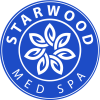Jawline augmentation is a cosmetic procedure that enhances the contours and proportions of the jaw. In this article, we’ll explore the significance of the jawline in facial aesthetics, the various methods of jawline augmentation, and its impact on overall facial appearance.
Understanding Jawline Augmentation
Jawline augmentation is designed to improve the appearance of your jawline, creating a more defined and sculpted contour. The primary goal is to enhance the proportions and symmetry of your facial profile. Jawline augmentation can be achieved through surgical and non-surgical methods.
Importance of the Jawline in Facial Aesthetics
A well-defined jawline is often associated with traits such as strength, vitality, and attractiveness. In many cultures, a chiseled jawline is considered a symbol of beauty and masculinity. The jawline plays a crucial role in defining facial proportions and symmetry. A well-defined jawline contributes to a more youthful and attractive appearance and provides support for the lower face.
Factors Influencing Jawline Aesthetics
Genetics plays a significant role in determining the shape and size of the jawline. Some individuals are naturally blessed with a strong and defined jawline, while others may have a less prominent or asymmetrical jawline due to genetic factors.
As we age, changes in facial volume and skin laxity can affect the appearance of the jawline. Loss of collagen and fat in the lower face can lead to sagging skin and a less defined jawline. Lifestyle factors such as weight loss or gain can also impact jawline aesthetics. Significant weight loss may result in excess skin and tissue around the jawline, while weight gain can lead to a rounder or less defined jawline.
Benefits of Jawline Augmentation
By enhancing the contours of the jawline, jawline augmentation can improve the overall appearance of your face from various angles. It can create a stronger and more defined profile and address asymmetry or disproportionality in the jawline. It can also correct irregularities in jaw shape or size, improving overall facial symmetry.
Common Techniques for Jawline Augmentation
Surgical Procedures
Jaw implants, made of silicone or other biocompatible materials, are surgically placed to enhance the size and shape of the jawline.
Genioplasty addresses issues such as a receding chin or chin asymmetry by reshaping the chin bone to improve the appearance of the jawline.
Non-Surgical Procedures
Dermal fillers, such as hyaluronic acid-based fillers, can be injected into the jawline to add volume and definition. They offer temporary results and may require periodic touch-ups.
Botox injections can be used to slim the jawline by relaxing the masseter muscles. This technique is ideal for individuals with a square or overly prominent jawline.
Procedure and Recovery
Before undergoing jawline augmentation, schedule a consultation to discuss your goals, expectations, and treatment options. Surgical procedures such as jaw implants or genioplasty are typically performed under general anesthesia, while non-surgical treatments may require local anesthesia or numbing cream.
The surgical procedure or injection technique for jawline augmentation will vary. Surgical procedures involve incisions and placement of implants or reshaping of the chin bone, while non-surgical treatments entail injections or fillers.
Following jawline augmentation, you will need to follow specific post-operative care instructions provided by your practitioner. Recovery times will vary; however, you should expect some swelling, bruising, and discomfort, which will gradually subside over time.
Risks and Considerations
Surgical procedures carry risks such as infection, bleeding, nerve damage, or implant rejection. Patients should discuss these risks with their surgeon and carefully weigh the benefits and potential complications before undergoing surgery.
Non-surgical treatments may cause temporary side effects such as swelling, bruising, or redness at the injection site. These side effects typically resolve within a few days to a week and can be managed with ice packs or over-the-counter pain medications.
Jawline augmentation may require long-term maintenance and follow-up appointments to maintain optimal results. Surgical procedures offer permanent results, while non-surgical treatments may require periodic touch-ups to sustain the desired aesthetic outcome.
Future Directions in Jawline Augmentation
Advancements in surgical techniques and materials will continue to improve the safety, efficacy, and outcomes of jawline augmentation. Non-surgical jawline augmentation techniques are becoming increasingly popular due to their minimally invasive nature and shorter recovery times. Ongoing research and innovation in this field are expected to lead to further advancements in non-surgical options.
Whether through surgical procedures or non-surgical techniques, jawline augmentation offers a range of options to address specific concerns and achieve desired aesthetic goals. If you are considering jawline augmentation, consult with a qualified practitioner to discuss your options, understand the potential risks and benefits, and make an informed decision.
At Starwood Med Spa, we are committed to providing personalized care. Contact our team today to inquire about our jawline augmentation treatment options.

